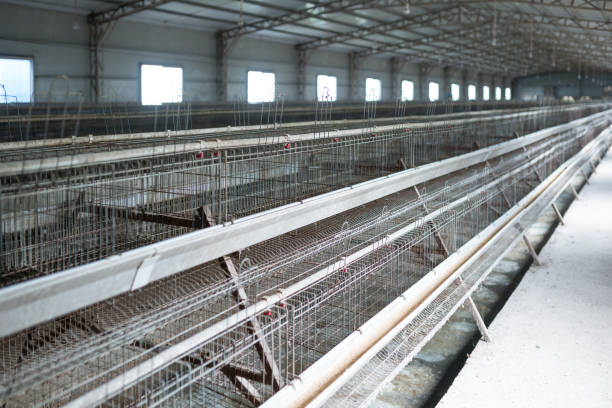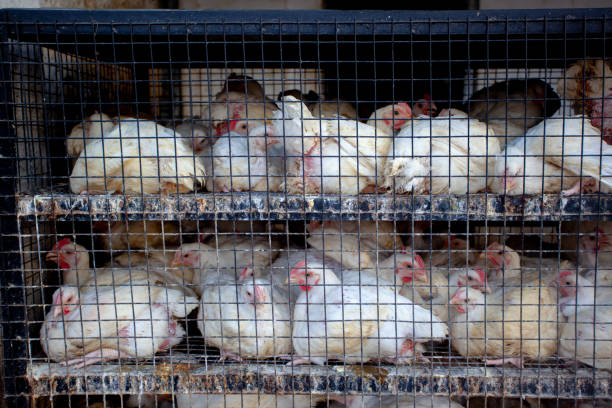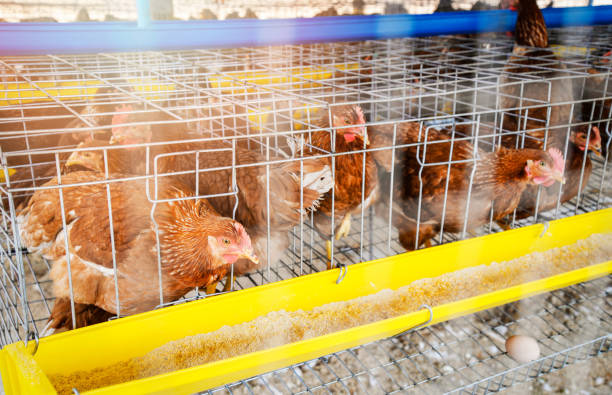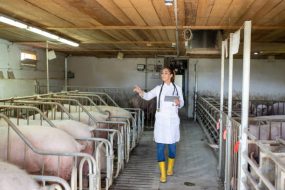If you’re a poultry farmer looking to maximize your egg production and provide the best living conditions for your chickens, then you’re in the right place. In this comprehensive guide, we’ll delve into the world of chicken layer cages. We’ll discuss their numerous benefits, the various types available, and best practices to ensure the health and well-being of your feathered friends while optimizing your egg yield.
Why Choose Chicken Layer Cages?
Before we dive into the types and best practices, let’s understand why chicken layer cages are a popular choice among poultry farmers.

1. Enhanced Egg Production:
One of the primary reasons farmers opt for layer cages is the significant boost in egg production. These cages are designed to create a comfortable and controlled environment for hens, which results in higher egg yields.
2. Space Efficiency:
Layer cages are space-efficient, allowing you to house a larger number of chickens in a smaller area. This is particularly advantageous for commercial poultry farming where maximizing space is essential.
3. Disease Control:
Cages help in disease control by reducing direct contact between chickens. This minimizes the risk of infections spreading through the flock.
4. Egg Protection:
With individual nesting spaces, eggs are protected from getting damaged or soiled. This ensures a higher percentage of marketable eggs.
5. Ease of Management:
Chicken layer cages simplify feeding, egg collection, and overall management. They make it easier to monitor the health and behavior of each bird.
Now that we understand why chicken layer cages are beneficial, let’s explore the different types available.
Read, Also >>>>>>>Discover A Detailed Review and Comparison of Top 10 Available Chicken Layer Cage Brands
Types of Chicken Layer Cages
Battery Cages:
These are the traditional cages used in commercial egg production. They consist of small individual cages stacked in rows, allowing efficient use of space. However, they’ve faced criticism for limited space per bird.

Enriched Cages:
Designed to address some of the welfare concerns associated with battery cages, enriched cages provide more space and amenities like perches and nesting boxes. They offer a balance between productivity and bird comfort.

Free-Range Systems:
In this system, hens have access to both indoor and outdoor areas. While it offers better living conditions, it can be challenging to maintain egg cleanliness and track individual bird performance.

Cage-Free Systems:
These systems allow chickens to roam freely within a barn or enclosed space. While they provide a more natural environment, egg collection can be more labor-intensive.

Colony Cages:
Colony cages are larger than battery cages and are designed to house multiple birds in a group. They provide more space for movement and social interaction among birds.

The choice of cage type largely depends on your specific goals, budget, and local regulations. Enriched and colony cages are often considered more humane alternatives to traditional battery cages.
Read, Also >>>>>>>Discover A Detailed Review and Comparison of Top 10 Available Chicken Layer Cage Brands
Best Practices for Chicken Layer Cages
Proper Sizing:
Ensure that each hen has enough space to move around comfortably, stretch their wings, and access feed and water. Overcrowding can lead to stress and lower egg production.
Adequate Ventilation:
Good air circulation is crucial to prevent the buildup of moisture and ammonia. Proper ventilation helps maintain a healthy environment for your chickens.
Nesting Boxes:
If you’re using cages without built-in nesting boxes, provide individual nesting spaces to protect eggs and encourage hens to lay in designated areas.
Hygiene and Cleaning:
Regularly clean the cages to prevent the spread of diseases and maintain egg quality. Remove waste, replace bedding, and disinfect when necessary.
Nutrition and Water:
Ensure that your chickens receive a balanced diet and have constant access to clean water. Proper nutrition is essential for egg production.
Health Monitoring:
Regularly inspect your chickens for signs of illness or stress. Promptly address any health issues to prevent them from spreading.
Egg Collection:
Collect eggs frequently to prevent them from getting dirty or cracked. Proper storage is essential to maintain egg freshness.
Compliance with Regulations:
Familiarize yourself with local regulations regarding poultry housing and welfare. Complying with these regulations is not only ethical but also avoids legal issues.
In conclusion, chicken layer cages offer numerous benefits, including increased egg production, space efficiency, and disease control. Choosing the right type of cage and implementing best practices are essential for successful poultry farming. By prioritizing the well-being of your chickens and following these guidelines, you can achieve higher egg yields while ensuring the health and happiness of your feathered companions. Happy farming!
Read, Also >>>>>>>Discover A Detailed Review and Comparison of Top 10 Available Chicken Layer Cage Brands












One reply on “The Ultimate Guide and Best Practices, Benefits, And Types of Chicken Layer Cages”
[…] Also, Read >>>>>The Ultimate Guide and Best Practices, Benefits, And Types of Chicken Layer Cages […]